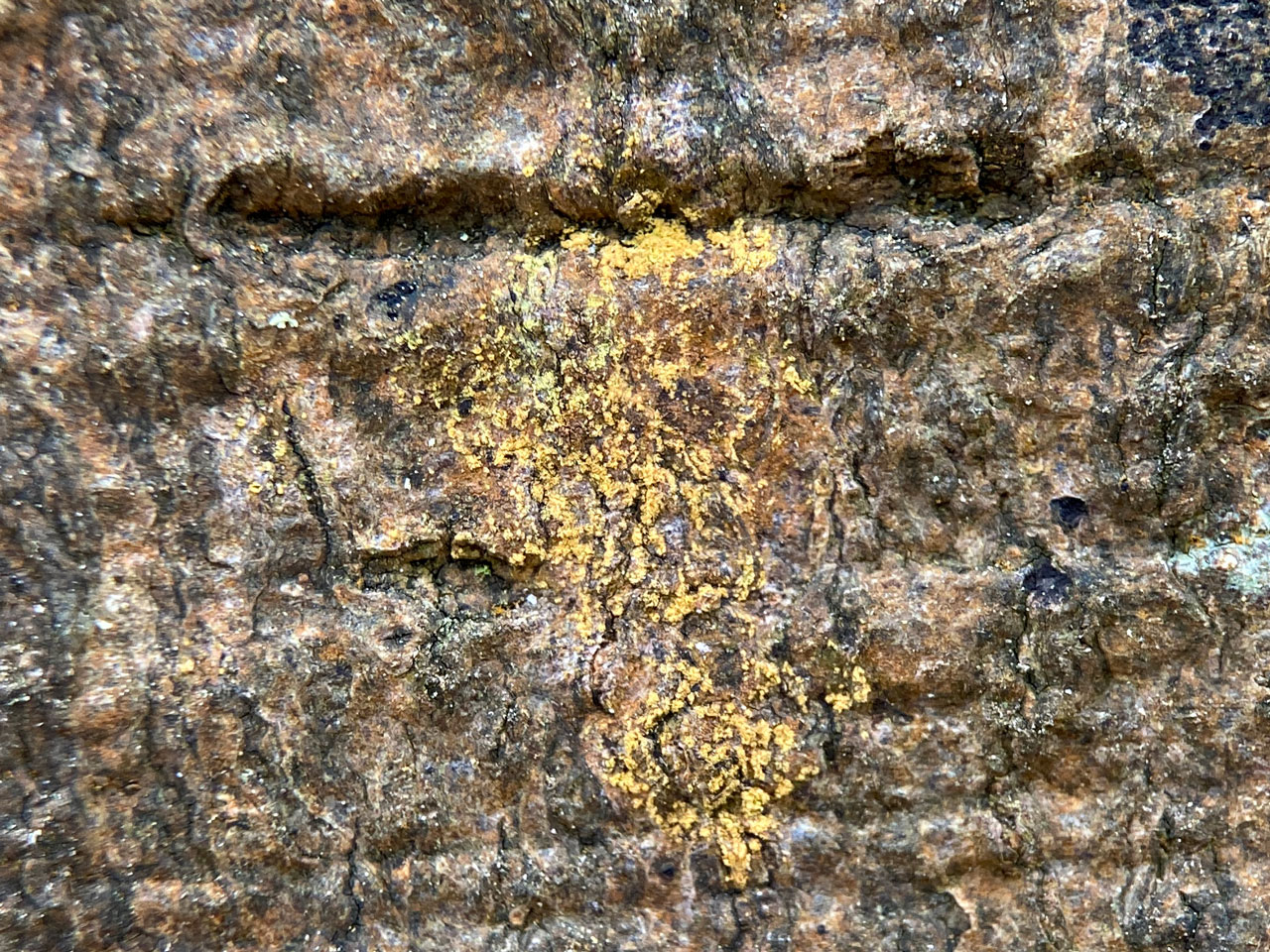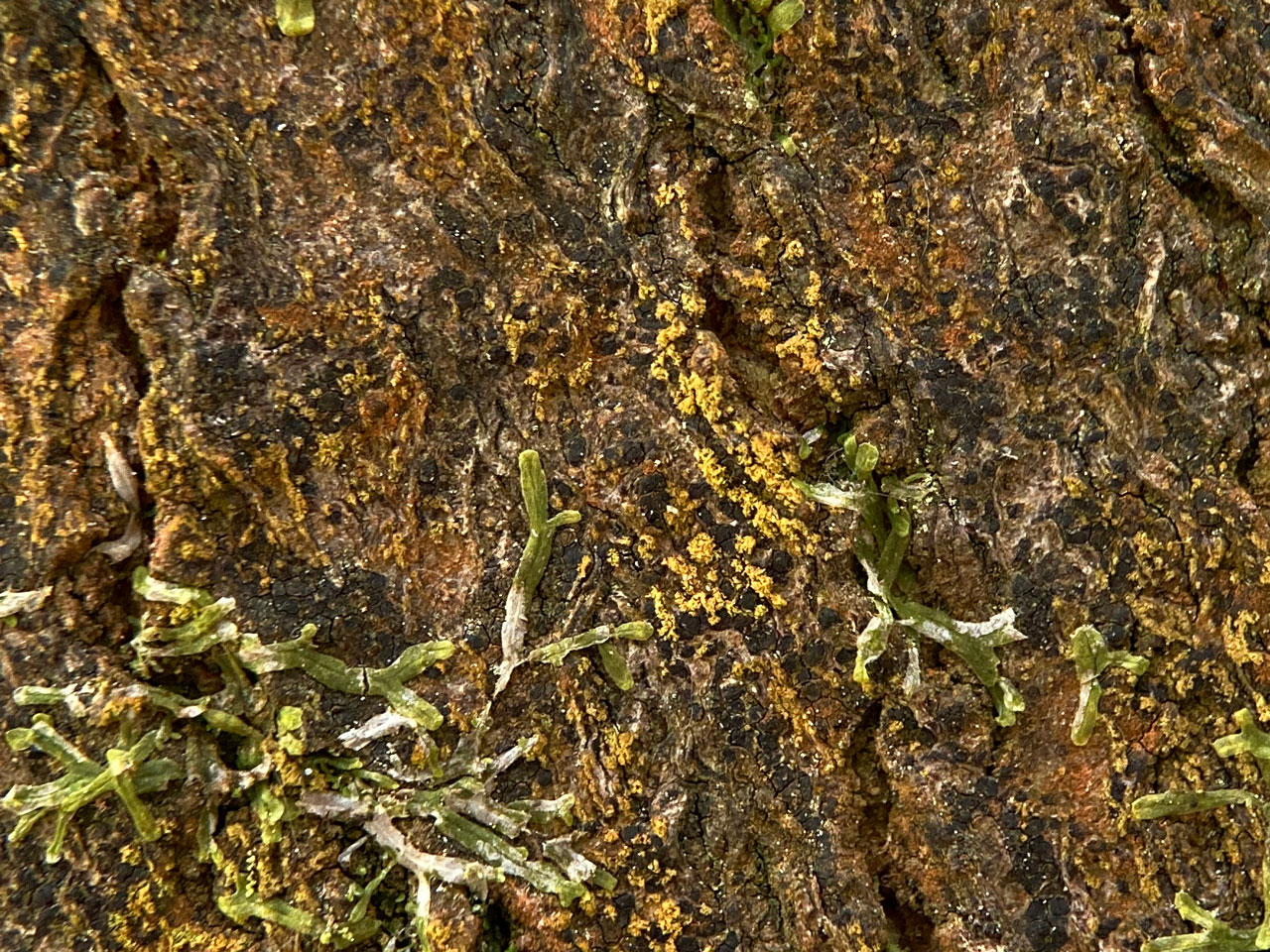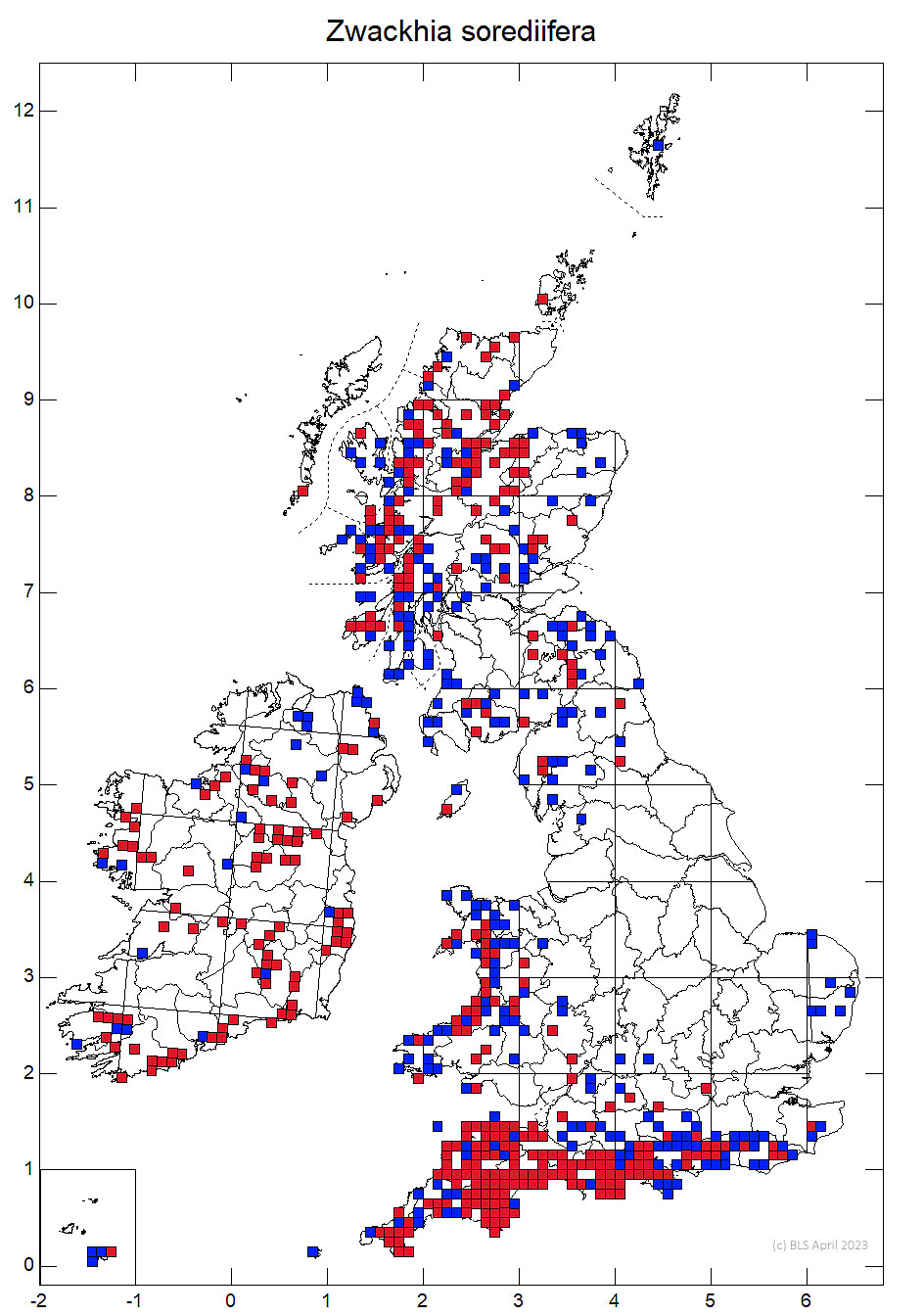A widespread, normally sterile lichen, with a medium brown thallus with punctiform, occasionally confluent pale orange-yellow or buff C+ red soralia. Common in the south and west, usually young deciduous bark in moist, shaded or open boggy woodland.
Thallus thin, smooth or somewhat scurfy, occasionally evanescent with a narrow, dark prothallus, pale to medium brown; soralia 0.4–1.2 mm diam., occasionally confluent to 3 mm diam., punctiform, pale orange-yellow or buff when fresh, fading to cream in dried collections; soredia farinose, 12–26 μm diam. Apothecia 0.3–0.6 (–1.3) × 0.12–0.3 mm, 0.06–0.14 mm tall, frequent, scattered, short, semi-immersed to sessile, unbranched; disc a slit; exciple K+ olive-green; epithecium pale; hymenium 90–120μm, tall, I+ red. Ascospores 30–40 (–58) × 4–5 μm, 10- to 14-septate, elongate-fusiform, with a distinct gelatinous sheath. Conidia 4–6 × 0.6–0.8 μm, bacilliform. Soralia C+ pink-red, K–, KC+ red, Pd–, UV– (gyrophoric acid, ± unidentified UV+ red pigments).
Often sterile and then distinguished from Thelopsis corticola and Francisrosea bicolor by the much smaller, usually discrete soralia and chemistry (both are C–). Rare, juvenile forms of Gyrographa gyrocarpa on bark differ in chemistry. Porina multipuncta (previously included in Opegrapha) has a more extensive thallus with numerous, fleck-like soralia, and is also C–. Z. viridis apothecia are similar but the thallus lacks soralia and is often richly fertile.
On (usually) young deciduous bark, especially Sycamore and Sallow, in moist, shaded or open boggy woodland

Frequent. S. & W. Britain, widespread in Scotland and Ireland. Zwackhia sorediifera has a highly oceanic distribution in Europe, while Z. viridis is a widespread sub-oceanic species.
Cannon, P., Coppins, B., Ertz, D., Pentecost, A., Sanderson, N., Simkin, J. & Wolseley, P. (2021). Arthoniales: Lecanographaceae, including the genera Alyxoria, Lecanographa, Phacographa, Plectocarpon and Zwackhia. Revisions of British and Irish Lichens 14: 1-15.
Text by Neil A Sanderson, based on Cannon et al (2021)


